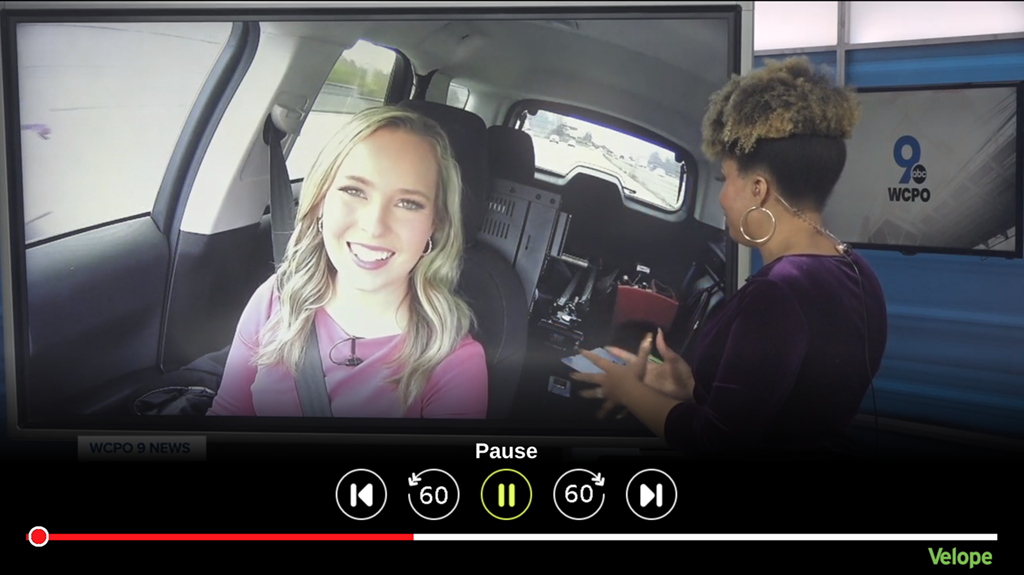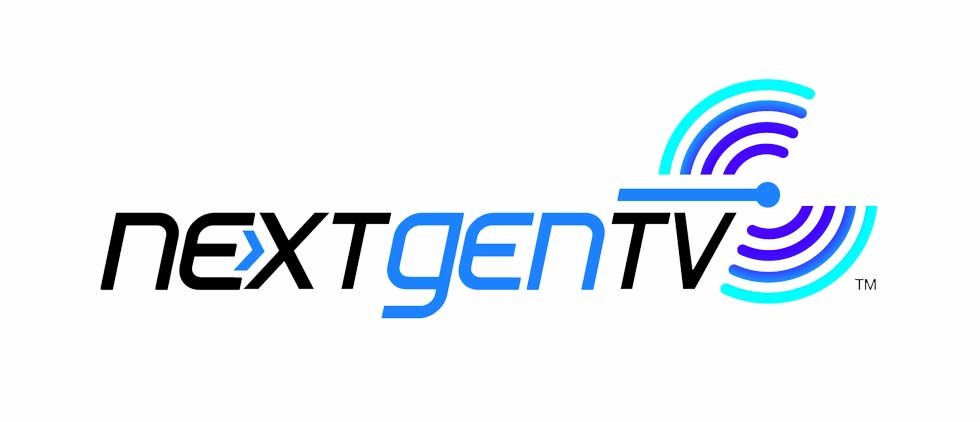Detroit Stations Launch Start Over, Datacasting To Boost NextGen TV
Stations try out consumer apps to build momentum for ATSC 3.0 in local markets

NextGen TV has been on the air in Detroit for more than three years. At this point, not too many people are tuning in, but broadcasters there are using the market as a laboratory, testing features and getting ready for when more viewers are paying attention.
“There’s a bit of a chicken-and-egg phenomenon going on,” Michael Newman, director of transformation at Graham Media Group, owner of WDIV Detroit, told B+C Multichannel News. “We need to demonstrate the value of this next-
generation television broadcast system.”
“We continue to search for the killer app that will be the motivating factor,” said Kerry Oslund, VP of strategy and business development at E.W. Scripps, which owns WXYZ-WMYD Detroit.

During the next quarter, the Scripps stations in Detroit plan to enable “start over” and “pause” functionality, giving over-the-air viewers a feature that cable viewers and streamers take for granted. The features also create new advertising inventory for the stations to sell.
Also Read: Local News Close-Up: Full Speed Ahead in Motor City
Detroit is also the hub for OTA Wireless, Scripps’s joint venture with Nexstar Media Group, which is datacasting there and in Indianapolis, Kansas City and Denver, covering about 6% of the country. Another station is expected to be added, bringing coverage to 12%.
Datacasting could be used to update signage on a highway or menus in McDonald’s stores throughout the station’s coverage area, for example.
Broadcasting & Cable Newsletter
The smarter way to stay on top of broadcasting and cable industry. Sign up below
Business development people for OTA Wireless are beating the bushes to sign up clients and start to generate revenue.
More Than Pretty Pictures
The Federal Communications Commission in 2017 approved the use of ATSC 3.0 broadcast technology, which was designed to offer viewers a sharper picture with better color, improved sound, mobile reception and access to internet-based programming over the air.
For broadcasters, the new format could support additional channels, pay services enabled by conditional access and the ability to offer other digital business services, such as data delivery and enhanced GPS. One estimate had those services delivering a potential $15 billion in annual incremental revenue for the industry at a time when it is losing viewers and advertising revenue to streaming.
Detroit was an early market to begin the shift to NextGen TV — a brand name for ATSC 3.0 — with Scripps’s WMYD firing up a transmitter in December 2020.

WMYD, an affiliate of The CW, is the market’s “lighthouse” station, which means it is broadcasting ATSC 3.0 signals carrying its own programming, as well as programming for its in-market “guests,” Scripps’s ABC affiliate, WXYZ; Graham Media’s CBS affiliate, WDIV; Fox-owned WJBK; and CBS’s WWJ.
Originally, Scripps used Phoenix as its NextGen test market.
“We do a lot of things with our partners and our network partners in Phoenix,” Oslund said.
But Detroit is where Scripps turns for its own projects because of the auto industry, which could be a big customer for mobile datacasting, enhanced GPS and other businesses.
“We want to be right under their nose, which we have been,” Oslund said.
To Oslund, the story of Detroit is two stories. One is about the viewer and advertiser experience with NextGen TV. The other is about mobile wireless data, “and we’ve made huge progress on that,” he said.
There are about 30,000 TV sets using NextGen over-the-air in the market,
Oslund estimated.
The NextGen technology enables stations to see who is watching, if they’re using an over-the-air antenna, if the TV is connected to the internet and if the set owner has opted into sharing data.
In March, Oslund was able to track 65,000 devices in 59,000 homes nationwide that have tuned into a NextGen signal. They’ve tuned in 31 million times.
In Detroit, stations track 7,700 devices in 6,500 households. Those devices tuned in 2.2 million times.
That data could be valuable. The stations did their first data sharing deal, which gives them a dashboard that tells them how they’re doing with ATSC 3.0 viewers.
The stations, along with Pearl TV, a coalition coordinating the NextGen rollout, are discussing putting that data into a unified platform and licensing it to measurement companies, which don’t have another good way to measure over-the-air viewing.
Scripps introduced the start over and pause functions at last year’s NAB Show and have rolled them out in Las Vegas. Detroit will have it soon and “it seems like a no-brainer for us everywhere else,” Oslund said.
“I wouldn’t say we’re slingshotting ahead of the SVOD guys,” he added. “I think we’re catching up in a lot of ways and that’s okay. We need to.”
New Vehicles for Ads
When an over-the-air viewer pushes the start-over button on the remote control, the set shifts from over the air to a virtual streaming channel. A pre-roll commercial or promo appears before the show restarts. “So we’re creating new kinds of inventory with new kinds of functionality,” Oslund said.
The new technology will also help compete with streamers for advertising.
“As a local TV station, it’s really important that we’re able to compete with Netflix, Disney and Paramount for ad dollars,” Newman said.
At this point NextGen ads are experimental. Stations will be able to see exactly where specific opted-in sets are located and tell advertisers precisely which households were exposed to commercials, making them more attractive to increasingly data-driven marketers.
“If you can do it on the internet we can do it on TV,” Oslund said.
In terms of programming, Oslund said he hasn’t seen any shows viewers like better on NextGen sets. Because so many stations are riding on a single signal, there isn’t enough spectrum for 4K pictures. But rolling out high-dynamic range (HDR) video for key sporting events is a priority.

Eventually other features consumers will value will be available via ATSC 3.0, including interactivity, personalization, commerce, betting and up-to-date electronic program guides.
Fox station WJBK is keeping its powder dry. The station hasn’t done any special programming using its ATSC 3.0 channel, according to general manager Greg Easterly.
“We’re just looking at it long term to see what’s going to be the best strategy and trying to determine what’s best for our viewers,” Easterly said.
But at WDIV, Graham Media is leaning into the new standard, Newman said.
“We really wanted to demonstrate what was different about this signal,” he said. “I think the Next-Gen stuff is hand and fist above what digital can do.”
Run3 TV App Launched
Four or five weeks after ATSC 3.0 started airing, WDIV launched the Run3 TV sidecar application.
“When you are tuned to our television station, you get a little call-to-action prompt that’s noticeable but not very disruptive,” Newman said. “With your remote control, you can open up the menu and navigate to all kinds of additional content” normally found on a station’s website.
One feed available on the sidecar app is a channel following the trial of the parents of the 17-year-old who was found guilty of the 2021 mass shooting at Oxford High School in Pontiac, Michigan.

Newscasts are available on-demand through the app, as is an airport cam. Viewers can create personalized feeds and bookmark stories during the workday and come home and watch them on their televisions.
The app provides a tangible benefit for buying a NextGen set, Newman said. “We have thousands of users in Detroit who actively have NextGen TV that are using our applications at the same time, and that’s every single day,” he said. “The Run3 has allowed us to dive in with two feet.”
Every once in a while, a set maker will update software and knock the sidecar offline, and calls come in from viewers who were watching.
“We get 10 to 30 complaints every time it happens,” Newman said. “I think that’s a really cool testament that people are looking for it and they’re using it regularly.”
Jon has been business editor of Broadcasting+Cable since 2010. He focuses on revenue-generating activities, including advertising and distribution, as well as executive intrigue and merger and acquisition activity. Just about any story is fair game, if a dollar sign can make its way into the article. Before B+C, Jon covered the industry for TVWeek, Cable World, Electronic Media, Advertising Age and The New York Post. A native New Yorker, Jon is hiding in plain sight in the suburbs of Chicago.

